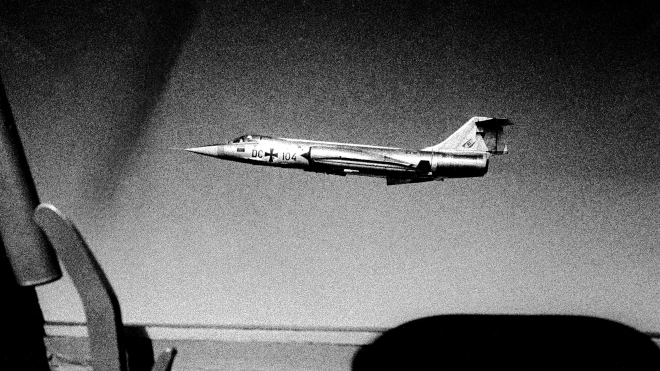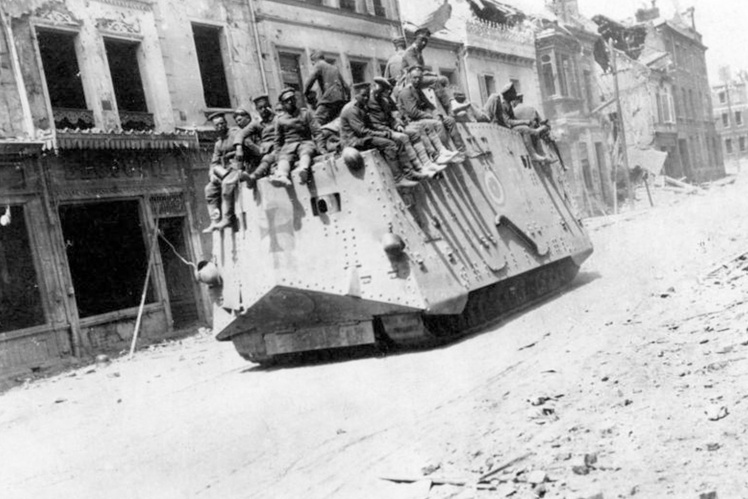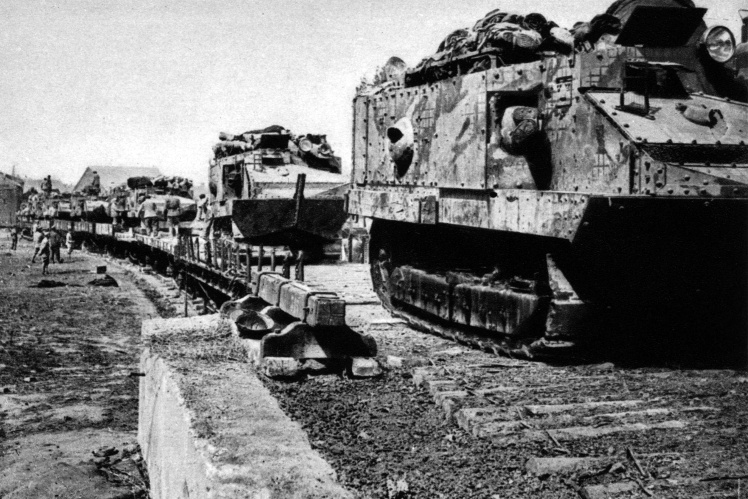Even Russian military equipment has many foreign parts. Do countries no longer produce their own weapons?
No, the era of globalization of the military industry has come. Strictly speaking, since the beginning of the Second Industrial Revolution, when the modern military industry emerged, states have never provided themselves with development and weapons by 100%. It was impossible for most countries — they just didnʼt have an industrial base for this. Even large industrialized countries such as Great Britain and Germany still exchanged technologies. The main characteristic of this era of the military industry is the reliance on private companies, because modern weapons were the work of engineers, enthusiasts and inventors. And engineers from different countries communicated and traded among themselves.
For example, the first French Schneider CA1 tank was developed under the leadership of the designer Eugene Biglia, who had previously designed armored cars for Spain, and then studied the experience of creating the British Mark I tank. Biglia purchased the first chassis for his tank from the American company Holt Manufacturing Company, which produced tractors. German A7V tanks also rode on Holt chassis — a private company sold them to anyone who wanted them. On the battlefield, CA1 and A7V fired at each other.
Sturmpanzerwagen A7V. Schneider CA1. Mark I
Wikimedia
By the beginning of the Second World War, the attitude towards the military industry had changed. In an atmosphere of tension and mutual mistrust, the great powers were inclined to produce weapons on their own, and military developments were shared very carefully and only with potential allies.
In 1939, the United States was faced with the fact that it did not have a modern tank that could stand up to the German ones. The first prototypes of the new tank, which would later become the M4, known as the Sherman, were developed by the private company Lima Locomotive Works with the involvement of British experts.
Shermans were produced and improved by American companies — ten large private ones, including General Motors and Ford Motor Company, and the state-owned Watervliet Arsenal. If the Americans trusted the British and involved them in their projects, the development of German tanks was exclusively carried out by German companies. Medium tank Pz.Kpfw. III was developed by Daimler-Benz and Friedrich Krupp AG, and the Panzer VI Tiger tank by Porsche and Henkel.
Before the First World War, countries depended to some extent on private manufacturers of military equipment and weapons, but before the Second World War, it was the governments that began to dictate what they wanted to see in the arms of their armies.
After the Second World War, a new war began, the Cold War, and already in 1947, the USA and the USSR became openly unfriendly states. Military developments have become even more secret. But at the same time, the first stage of industrial globalization began. Because the countries actively shared developments within their alliances — NATO and the Warsaw Pact. For example, in 1958, mass production of the American fighter F-104 Starfighter began, in the production of which more than 500 European companies participated. And the aircraft itself appeared in service not only in the USA, but also in the allies — Germany, Italy, the Netherlands, Belgium, Canada and Japan.
M4, known as Sherman.
Wikimedia
Technology became more and more complex, so its production required more high-tech parts and elements that cannot be produced by one country. Resources are also important. For example, Russia supplies almost half of the titanium used by aerospace companies around the world. Even now, the European Union has decided not to impose sanctions against the metallurgical company VSMPO-Avisma, which produces and sells titanium. The decision was lobbied by Airbus SE, the largest manufacturer of commercial aircraft operating in France, Germany, Great Britain and Spain. Airbus still canʼt do without the Russian titan — thatʼs how the world economy works now.
However, Russia cannot do without foreign partners as well. Especially in the field of high-precision modern devices, without which, for example, rockets do not fly. Back in 2005, Vladimir Putin ordered the government to "reduce the share of foreign capital in strategic industries." In fact, he tried to exclude Russia from the process of globalization of the military industry. However, he did not succeed.
In April 2022, the UKʼs Royal United Defense Research Institute (RUSI) published a report Operation Z: The Death Agony of Imperial Illusion. The report analyzed the composition of Russian military equipment used by the occupiers in Ukraine. Parts of foreign production are almost everywhere. Only the communication complex of the IL-76 transport aircraft has 80 foreign parts. Projectiles for Russian Uragan surface-to-air missiles use American gyroscopes, and TOR-M2 anti-aircraft missiles use British oscillators. The situation is the same with the Iskander-M missile complex, Kalibr and Kh-101 cruise missiles, etc.
So, Ukraine canʼt produce a super weapon, a tank or something like that?
No, it canʼt. It is too complicated, expensive and time consuming. And, under modern conditions, it is not necessary. Most countries cannot afford independent development, so they buy licenses for other nationsʼ designs and combine them. For example, the Polish Krab self-propelled howitzers, three batteries of which Poland transferred to Ukraine in June 2022, are a combination of the British AS-90 self-propelled howitzer with the South Korean K9 Thunder self-propelled gun chassis. Moreover, the Poles tried to develop their own chassis for the Krab based on the Soviet T-72 tank, but these attempts were unsuccessful. And even such a path is quite long. From the first tender for the development of the Krab to the first sample in its final form, 18 years have passed.
Parade for the Day of the Constitution of Poland in Warsaw, May 3, 2019.
Wikimedia
Another way is to modernize фдкуфвн existing equipment. Polish PT-91 Twardy tanks, which are also currently fighting in Ukraine, are a thorough modification of the Soviet T-72M1 tank.
The main problem remains the possibility of mass production. The Ukrainian tank Oplot, based on the T-84 model, never entered service in the Ukrainian Armed Forces. Now it is used only in Thailand, which bought 49 such machines from Ukraine. They were produced for four years — from 2014 to 2018.
Since 1995, Poland has produced only 232 units of the same PT-91 Twardy in the basic version. For comparison, the US has produced more than 10,000 of its M1 Abrams main tanks since the 1980s. And from 1942 to 1945, during the Second World War, at the maximum production capacity, America produced 49,234 Shermans. Most countries of the world donʼt have such capacities.
And why canʼt Ukraine just buy a lot of foreign military equipment?
Itʼs not about money. Military orders are not a quick matter, and the other side must also want to sell you something. When South Korea was developing the aforementioned K9 Thunder self-propelled guns, it tried to buy licenses for towers from the British companies Vickers Shipbuilding and Engineering and Marconi Electronic Systems. The first refused to sell the license, and the second asked for an exorbitant price. The Korean company Samsung Techwin spent 8 years developing its own tower design.
The decision to sell military equipment is also influenced by the problem of industrial espionage. When a country sells its equipment or developments, it must be sure that the buyer reliably protects its own defense-industrial complex. For example, in 2021, the United States convicted Chinese intelligence officer Xu Yanjun, who tried to gain access to the design of an aircraft engine of the General Electric Aviation company. For this, an employee of the company of Chinese origin, David Zheng, was lured to China — allegedly for a conference. His laptop unexpectedly "broke" there, which local colleagues volunteered to "fix". And they tried to install a spy program on it, but it was not possible to steal the data. American counterintelligence discovered that Xu was running the operation, lured him out of the country, and arrested him. Such a mistake by one employee of the company can cause other manufacturers of military equipment not to partner with it.
NASAMS air defense system launcher.
Wikimedia
Even if they are willing to sell you equipment, they are unlikely to sell much of it, and such contracts are executed for a long time. In 2020, Hungary purchased several batteries of Norwegian NASAMS anti-aircraft missile systems for approximately one billion dollars. It is not known exactly how many, but it is known that 240 missiles appear in the contract. Deliveries of air defense systems to Hungary will begin only in 2023. Therefore, the theory popular in social networks that Ukraine could easily buy 40 NASAMS batteries for $2.6 billion and close the sky is, unfortunately, impossible. Neither in terms of the cost of such supplies, nor in terms of the actual ability to purchase such a quantity of batteries.
Translated from Ukrainian by Anton Semyzhenko.
Babel is similar to a modern tank. It will be difficult for us to cope on our own, but together with you we are a force! Support us: Patreon 🔸 [email protected]🔸donate in cryptocurrency🔸in hryvnia.



